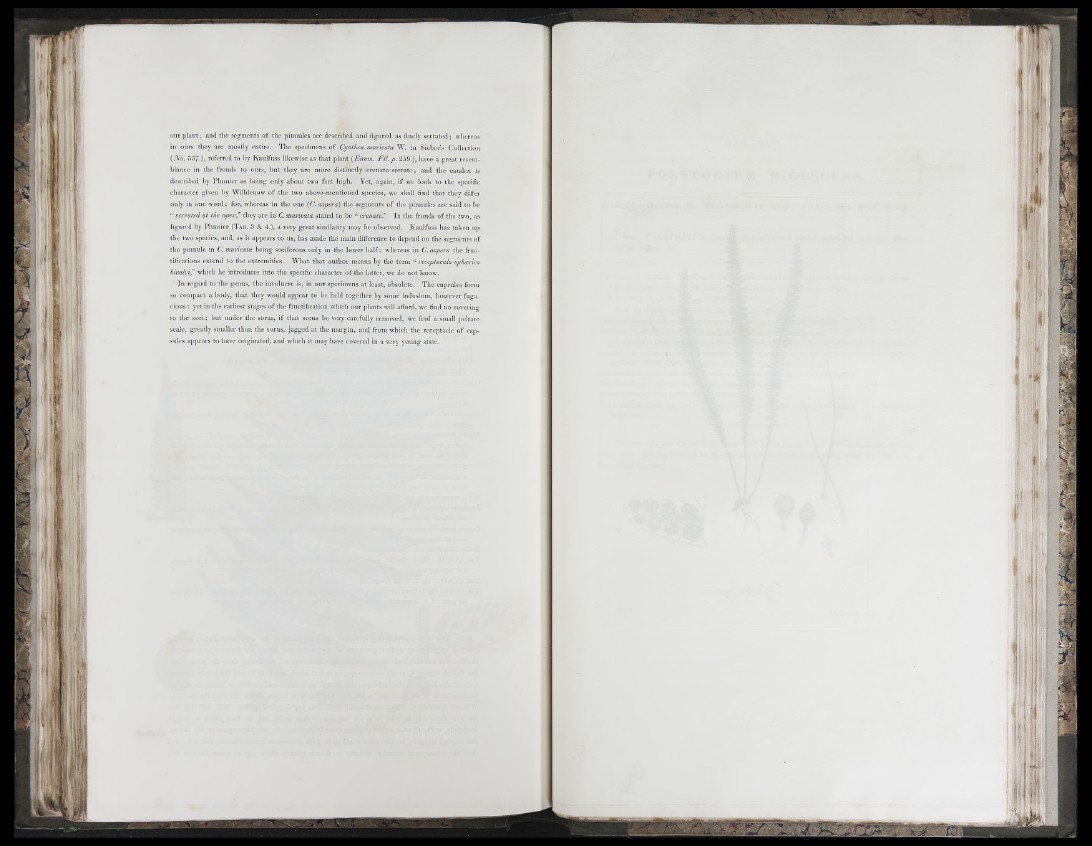
:
our plan t; and the segments o f the pinnules are described and figured as finely serrated; whereas
in ours they are mostly entire. The specimens o f Cyathea muricata W . in Sicber’s Colle c tion
(yVo. 337.), referred to by Kaulfuss likewise as that plant {E n n v i. F il. p . 2 5 9 .), have a great resemblance
in the fronds to ours, but they are more distinctly c r en ato-ser rate ; and the caudex is
described by Plumier as b e in g only about two feet h igh . Yet, again, if wc lo o k to the specific
character given by W illd en ow o f the two above-mentioned sp e cies, wc shall find that th ey differ
only in one w o r d ; for, whereas in the one (C aspei-a) the segments o f the pinnules arc said to be
“ se rra ted a t the apex',' they arc iu C. muricata stated to be “ crenate." In th e fronds o f the tw o , as
figured by Plumier ( T a b . 3 & 4 . ) , a very great similarity may he observed. Kaulfuss has taken up
th e two sp ecies, and, as it appears to us, has made th e main difference to depend on the segments o f
the pinnule in C .m u rica ta b ein g soriferous on ly in tlic lower ha lf; whereas in C. a spc ra the fructifications
extend to the extremities. W h a t that author means by the term “ receptáculo sphccrico
b iv a lv if which he introduces into the specific character o f the latter, we do n o t know.
In regard to the genus, the involucre is, in our specimens at least, obsole te . The capsules form
so compact a body, that they would appear to be held tog e th e r b y some indusium, however fugac
ious : ye t in the earliest stages o f the fructification which our plants will afford, wc find n o covering
to the s o r i ; but under the sorus, i f that sorus be very carefully removed, we find a small peltate
scale, greatly smaller than the sorus, ja g g ed at the margin, aud from which the receptacle o f capsules
appears to have originated, and which it may have covered in a very y ou n g state.
I